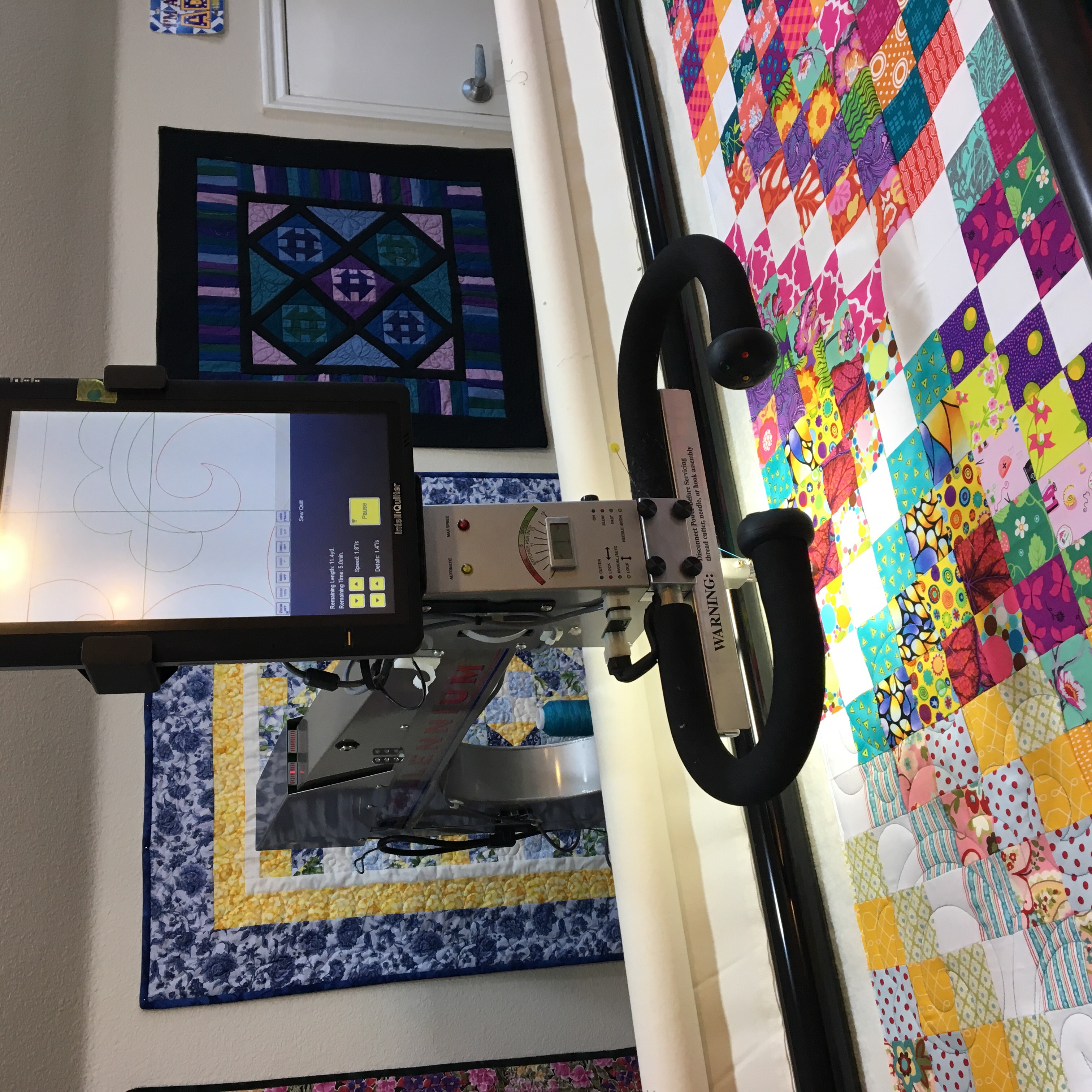
We see new things coming out in sewing machines all the time. New features, new stitches, new presser feet, every year there’s something new. Bigger, better, faster, more than what we have at home. The two main barriers for me to upgrade are cost and learning curve. I want to use an item enough to get my money’s worth, and once I have figured out to use something, whether sewing machine or computer, I am loathe to start that process all over again just for new shiny.
I got my long arm in 2006 and we quickly established a tentative relationship. Bessie was always in charge. If Bessie didn’t want to sew, we didn’t sew. Over time I learned that she was very particular about ambient temperature and humidity and as I kept the environment to her liking, things went better. Honestly you could say the same thing about me. Just get it 52 and dry and I’m a grumpy individual. So we got to where we did pretty well together but I wanted more. Instead of upgrading Bessie, I added a computer control platform to her.
Here was another huge learning curve and not much instruction available. I learned to do the basic stuff and kept at it. I was able to take a class on line which helped clear up some confusion, but it always seemed to be counter intuitive and there were always issues. Always. I keep a notebook of every quilt I have quilted. I note size, thread, needle, quilting pattern and notes on how it went. I only have a small handful of quilts that sewed off without a single hitch. It was a very frustrating and defeating journey. (And no I am not going to name that software program, that’s not what this post is about).
Unexpectedly this spring, I was talking to someone who mentioned IntelliQuilter and that I could put it on my type of Long Arm. I arranged for a demo and may I say OH MY LAMBCHOPS. It’s not just that it did the same things easier, it did things that my software package couldn’t even dream of doing. It had so much more potential and as I asked questions, there weren’t ‘hacks’ to get things done, there were actual ways to do it. I made the huge decision to make the financial outlay to get the new software. This was a huge decision. I was facing a large outlay of money and a large learning curve in front of me, but this time it looked like the potential was just as large. This was something worth going to the effort to do.
This got me to thinking, when do you know it’s time to make a change? How do I measure the frustration as a factor of learning curve, in other words, how much of this is me not knowing what to do, vs the system not being capable of doing what I want. When is my investment a loss because I’m not using it vs throwing a bit more money at the problem to get a solution that works for me. I was able to take the time to see a detailed demo of the new system and that put to rest a lot of my trepidation, the money would be well spent to upgrade so I decided to move forward.
Installation day was 4/4 and to say I was excited about it is an understatement. Quilts that have been in the to-be-quilted pile for YEARS are popping up in my head with an idea about how I can now quilt them the way I wanted to all along and be happy with the work. There was excitement and trepidation at the same time. So much to learn. I don’t have hours to spend at this in a good year, let alone in a year when I’m building a house too, but I have a plan for that. The last year my sewing mojo has been way out of whack. I know that part of that is because piecing a lot of tops when I am struggling to get the tops I have quilted was really bothering me. I am looking forward to a lot more finishes this year, especially moving forward with my plan to quilt one quilt a month. With my old system that goal seemed about all I can handle. With the new system, I should be able to meet that goal with minimal effort!


